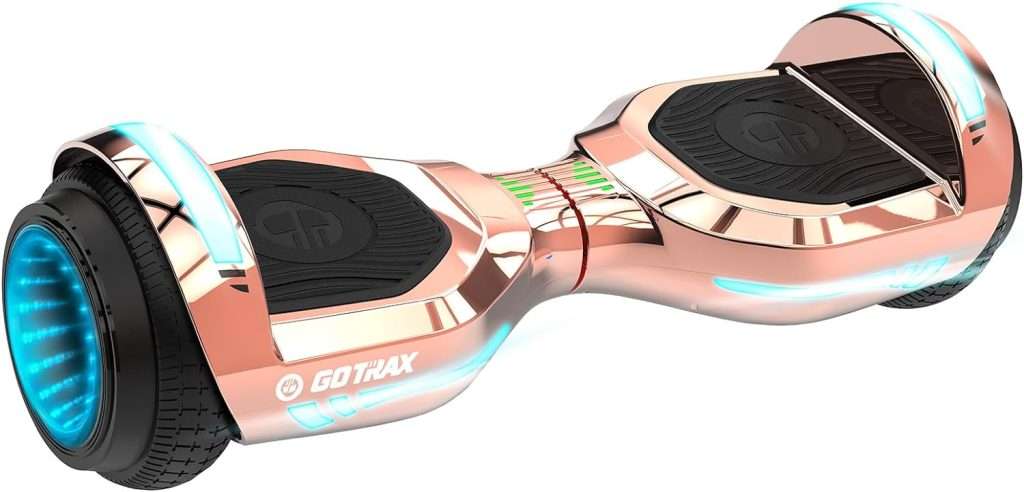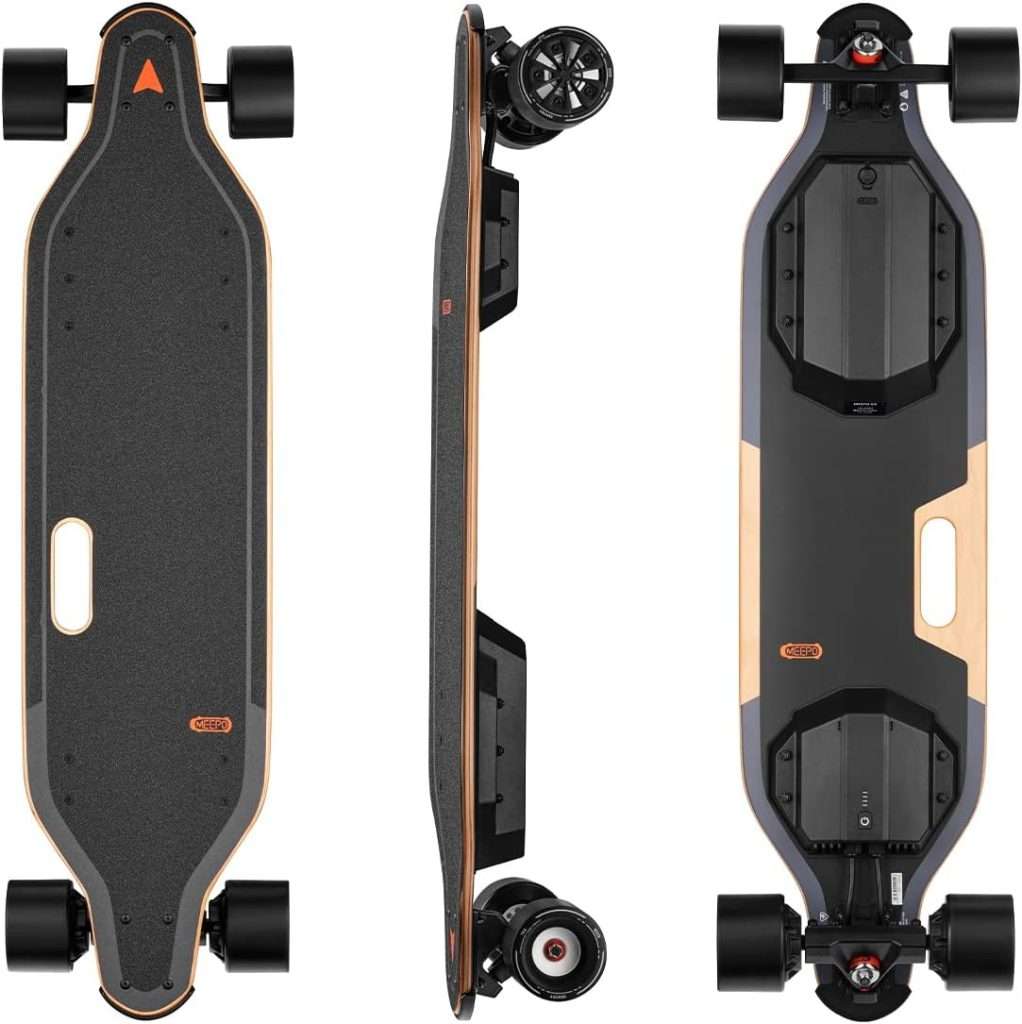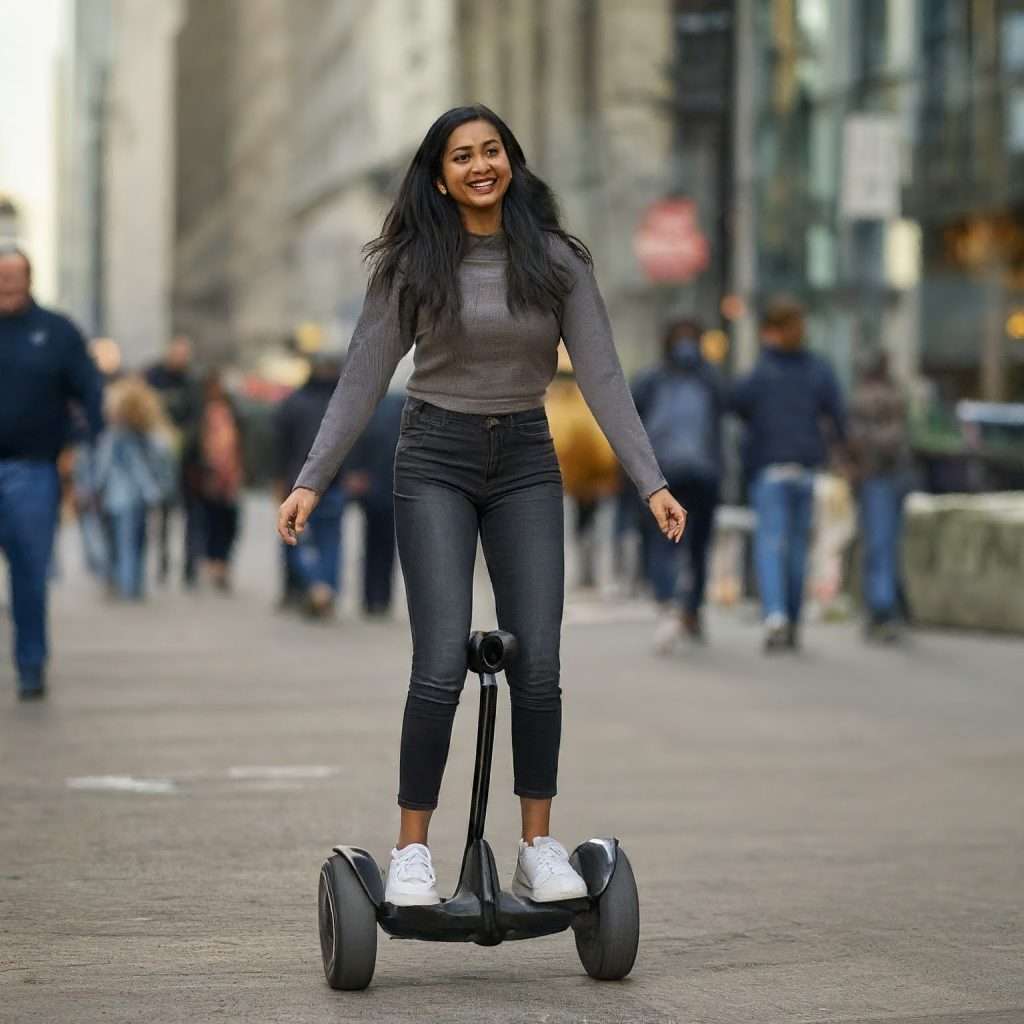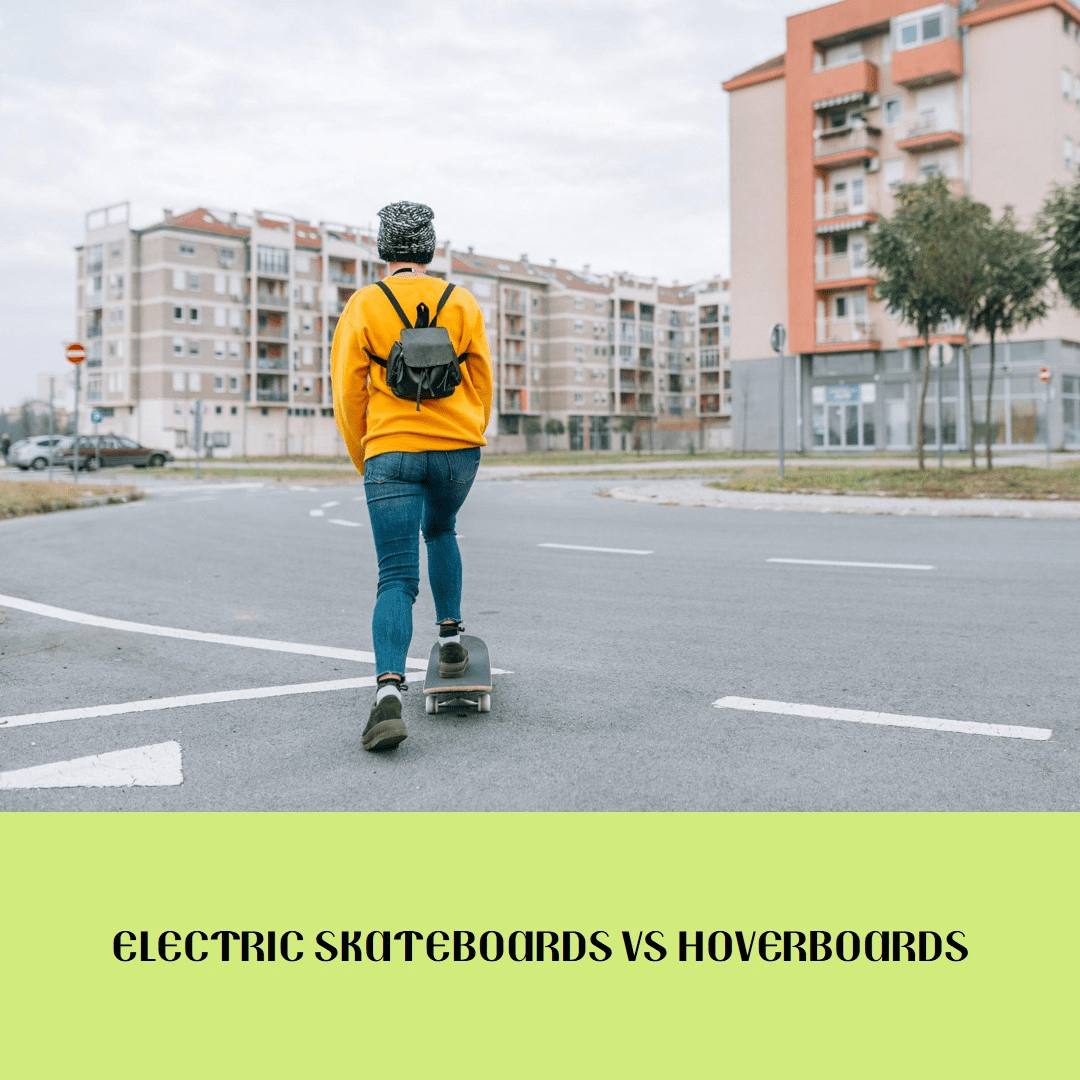Lifemaster Kids Scooter – Children and Toddler 3 Wheel Kick Scooter – LED Wheel Lights Illuminate When Rolling– Adjustable Handlebar – Indoor and Outdoor Purple
10% OffHurtle 3-Wheeled Scooter for Kids - Wheel LED Lights, Adjustable Lean-to-Steer Handlebar, and Foldable Seat - Sit or Stand Ride with Brake for Boys and Girls Ages 1-14 Years Old
18% OffDecked out with futuristic electric motors, both hoverboards and electric skateboards provide a cool way to commute short distances with a techy twist. But what exactly are the differences between these emerging electric rideables beyond four wheels versus two?
This electric skateboard versus hoverboard showdown will break down the key pros, cons, and distinctions to help determine which hot new mobility gadget best fits your needs. Beyond comparing speed, range, terrain abilities and costs, we’ll also spotlight what makes each ride unique.
Discover if you should be floating atop a hoverboard or carving streets on an e-skateboard through urban jungles!
Side By Side Overview
While hoverboards and electric skateboards share similarities, some inherent tradeoffs exist between these innovative transporters as outlined in this comparison chart:
| Electric Skateboard | Hoverboard | |
|---|---|---|
| Riding Style | Steering w/weight shifts | Leaning body to steer |
| Terrain Handling | All terrains | Mostly smooth surfaces |
| Range | 7-15 miles | 5-10 miles |
| Speed | 10-25 mph | 6-10 mph |
| Weight Limit | 100-250 lbs | 220-260 lbs |
| Portability | Carry separately | Compact with no parts |
| Price | $200-$2000 | $100-$500 |
As we dive deeper below, you’ll notice hoverboards promote simple floating mobility while electric skateboards facilitate more extreme sport performance. This helps dictate ideal riding purposes.
Riding Style & Control
The first big difference lies in the riding technique itself…
Hoverboards have you centered atop a split platform housing the electrical components.

By slightly shifting foot placement and body angle, you subtly steer the device left or right while it self-balances. This creates smooth gliding motion at the tilt of a torso. It generally features a small central base with integrated double footpads.
Electric skateboards work much like traditional skateboards, relying on a deck, trucks and wheels while adding a battery powered motor. Riders stand sideways and physically steer using their weight shifts through the terrain.

More extreme lean angles engage faster carving. Handheld remotes sometimes assist fine tuning speed. Overall, e-skateboards provide more raw physical ride control through stance changes.
Many view hoverboards as easier to initially hop on and learn. But expert e-boarders can achieve greater command of their ride through agile weight distributions in motion. Different riding preferences should help determine which better fits your balance and coordination capabilities.
Terrain Tackling Abilities
These electric mobility gadgets also differ in the types of ground surfaces best suited to their specialized designs…
Standard hoverboards operate best indoors or on flat, paved concrete and asphalt. Their smaller wheeled base struggles traversing uneven sidewalks, grassy terrain and steep slopes. Solid downwards-facing contacts allow easily rolling over minor cracks and debris. Just don’t expect to go truly off-roading!
Electric skateboards handle rugged urban conditions better courtesy large urethane wheels with better suspension. Coasting over uneven sidewalks, dirt trails and hilly streets proves no sweat. Some higher end e-boards even tackle rocky dirt trails! Larger diameter wheels easily absorb bumps rather than ruining the ride. If seeking electric mobility across parks and varied topography, e-skateboards accommodate more adventure.
So while hoverboards serve well slowly floating about indoors and smooth sidewalks, those wanting to add juice exploring rougher cityscapes benefit from electric skateboards.
Speed & Power
Hoverboards pride themselves on user-friendly operation for beginners, which comes some speed tradeoffs…
Many standard hoverboards cap speeds around 6-10 mph controlled through subtle foot platform shifts. This makes learning to balance less scary for new riders still getting comfortable not eating pavement. Peak speeds typically max out under 10 mph.
Electric skateboards conversely tap larger batteries and more powerful in-wheel hub motors or mounted decks to deliver exhilarating acceleration up to 25+ mph! Variable speed control via a handheld remote or throttle often allows hitting crazy fast speeds reserved for pros. Even mid-tier budget e-boards still far outpace hoverboard velocity.
So while hoverboard slow pokes amble along at walking speeds, advanced electric skateboarders can crack 25 mph squeezing every last volt out for electrifying velocity. Just ensure your skills match insane speeds!
Rider Weight Limits
Given the smaller base and limited power of hoverboards, heavier riders will find electric skateboard load capacities more accommodating…
Hoverboards safely support around 220-260 lbs courtesy compact centralized motor configurations. Exceeding weight limits risks shortening battery life and reducing responsiveness. Large feet sizes may also feel cramped on petite platforms.

Electric skateboards back heftier bulkier boards, larger wheels and beefier batteries to haul 100-250+ lbs depending on the model. Custom fabricating wider decks that distribute mass aids larger riders. Higher voltage packs add necessary juice pushing beefy bodies.

In basic terms, sturdy electric skateboards handle bigger bodies and taller riders more smoothly if you exceed average weight. Compare specs closely.
Portability Convenience
When ride time ends, you’ll need to lug these gadgets back home somehow…
The self-contained hoverboard reigns supreme in pure carry convenience. With electrical components consolidated between dual integrated foot pads, simply walk off stepping between pads to carry hands-free. No cumbersome accessories like remotes come apart. Just grab and go!
Electric skateboards consist of multiple components like the deck, trucks, wheels, enclosures and remote. You’ll need to tuck all parts under an arm or backpack to transport since nothing neatly folds together. However, compact “mini” versions continue gaining popularity for easier toting while still packing power.
If regularly commuting moderate distances by bus/rideshare while needing electric mobility on both ends, hoverboards easily stow under an arm once powered off. Skateboards remain trickier between rides needing hands to carry.
Costs Overview
Lastly, with advanced electric powertrains comes higher price tags depending on performance…
Budget-friendly hoverboards start around just $100 for basic self-balancing models with limited features. More advanced units with extras like Bluetooth speakers, LED lightings and rugged wheels bump up to the $200 to $500 range. Either way, affordable models fit tightest budgets.
You can grab an entry-level electric skateboard for $200 to $400 with max speeds around 15 mph using cheaper components. Mid-tier boards offering 20 mph speeds and 10 mile range typically cost $400 to $1200. High performance carbon fiber boards with 25+ mph speeds and 20+ mile battery ranges approach $2000 territory as the most advanced “pro-sumer” class.
If simply casually commuting short distances under 3 miles, basic hoverboards wheels still get you there cheaply. Those wanting versatile exploring and higher speeds across cities need to budget extra for long range electric skateboards.
Which is Better for You?

Now to decide which new-age transport gadget optimally matches your personal lifestyle. Ask yourself these key questions:
What type of range and speeds do you require? Hoverboards work well for shorter sub-5 mile commutes under 10 mph like last mile trips. Electric skateboards offer extended distance mobility with electrifying speeds exceeding 25+ mph.
What kind of terrain will you traverse? Hoverboards tackle smooth paved sidewalks and indoors best. Rugged electric skateboards cut through varied urban environments from grass to hills.
Do you need to easily carry while off board? Hoverboards compactly consolidate all components into the central self-contained base for easy transport into buses, Ubers or offices. Electric skateboards must be manually carried in parts.
What experience level are you? Beginners benefit learning on self-balancing hoverboards at slower paces. Intermediate and advanced riders unlock e-skateboard tricks.
How much do you want to spend? Grab hoverboards starting under $200 on tight budgets. Electric skateboards range from $400 into $2000+ territory for extreme performance specs.
Matching realistic needs against performance, portability and budget determines whether a hoverboard or electric skateboard synergizes best!
Both make great last mile transportation accessories with eco-friendly style. But choose wisely catering to your personal commute, riding goals, skill level and financial realities. Doing homework pays – your perfect battery-powered ride awaits!

I’m the founder of HoverboardsGuide.com, a comprehensive website dedicated to electric scooters and hoverboards. With a deep-rooted passion for electric gadgets, I’ve accumulated extensive experience in this field. I aim to assist users in selecting the best gadgets and providing reliable guidance.
I’ve tested and reviewed numerous models, gaining in-depth knowledge about their features, performance, and overall quality. Feel free to reach out to me with any queries, as I’m dedicated to addressing your concerns promptly. Join me on this exciting journey of exploring the world of electric rides and making informed decisions

























